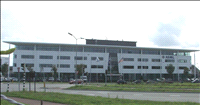VoIP rules the net as companies retire legacy networks
By K C Meera | 12 Dec 2002
Mumbai: A new dawn is rising for Voice over Internet Protocol (VoIP) as companies are increasingly replacing their legacy telecommunication networks with IP equipment. VoIP technologies have matured to the point that it is only a matter of time before the classic delay, jitter and quality problems are solved.
VoIP is also getting a boost from the continued deregulation of the world’s markets. One of these is India, where in April 2002, Internet telephony was legalised, although with restrictions. Despite the added costs that these restrictions entail, the Indian corporate sector has already begun moving to VoIP in a big way.
Companies usually use the migratory route to IP telephony. A common strategy is to roll out IP telephony in new network sites rather than making new investments in legacy equipment. In wide area networks, enterprises use their existing routers as voice gateways to connect their private branch networks (PBXs) to a private IP network service, the Internet, and the public switched telephone network (PSTN) for off-net calling.
Within India, VoIP is restricted to communication between computers and IP-based terminals. In the case of international calls, communication from a computer to a telephone abroad is allowed. The VoIP networks also have to operate independently of the domestic PSTN, and VoIP calls cannot originate or terminate on a PSTN network within the country.
This makes things a little more complicated, because companies have to keep two phones at each person''s desk, one for PSTN calls and the other for VOIP.
On local area networks, companies can install new IP phones as legacy telecom exchange leases expire or whenever expensive equipment upgrades become necessary. Meanwhile, they can tie the remaining legacy exchanges into the IP network.
These options allow companies to start with the deployment size they are comfortable with. Wherever outdated infrastructure needs a huge investment just to bring it up to current technology levels, companies move over to IP en masse. The city administration of Dallas, Texas, recently replaced seven legacy networks with a single integrated IP network.
Packet telephony allows users to process phone calls from a standard data server rather than a proprietary, expensive PBX. This means trouble-shooting can be done by in-house computer experts, and companies save on costly service calls.
While the main attraction of VoIP right now is cost, in future it will be driven by innovation in converged data, voice, and video applications.
Some
of these are:
Unified messaging. With unified messaging, users
can access all forms of messages — voice mail, email,
fax, and video mail — from a common mailbox.
IP call centres. IP-based call centres can allow users and customer service representatives to collaborate using live, integrated Web-based voice, video, and data “conversations.” Call centre agents can push pertinent information and graphics to the user across the Web during the discussion. This application is likely to pick up even more steam as VoIP over DSL, cable, and other broadband access services become available, because users will not require a separate PSTN line to talk to a call agent.
Content
delivery: More companies are planning to conduct training
and communications Webcasts over their intranets, and
content providers are beginning to deliver streaming-media
events over the Internet. IP networks can be modified
for content delivery.
VoIP can only go from strength to strength. It doesn''t
make business sense to run two or more networks when you
can run just one, and since IP networks offer so many
benefits, it’s legacy networks that may eventually
get phased out.






























